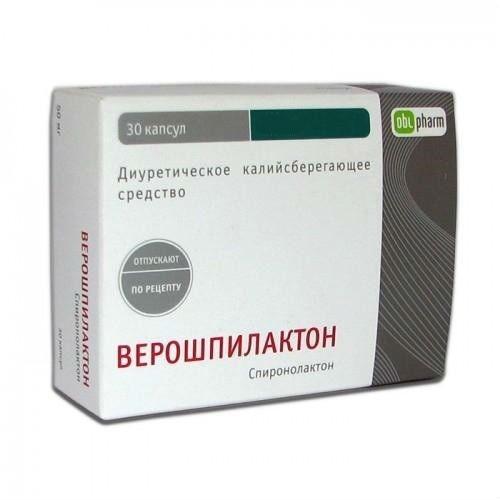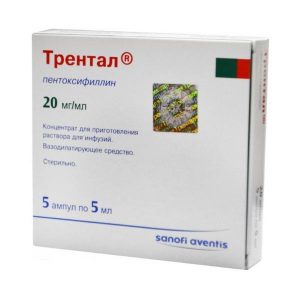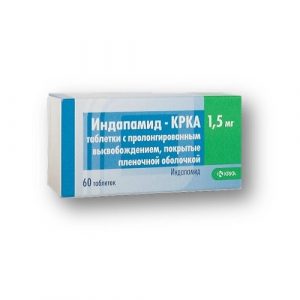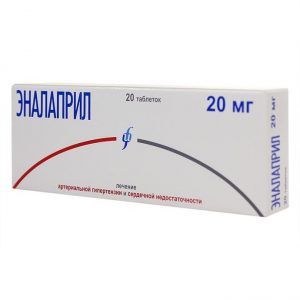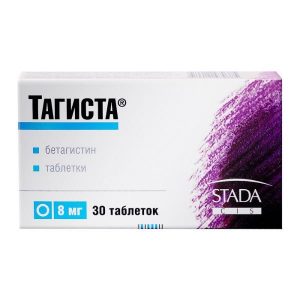Description
Latin name
Tavanik s Terbinafine
packaging 30 pcs
Indications
Edematous syndrome in chronic heart failure, liver cirrhosis (especially with the simultaneous presence of hypokalemia and hyperaldosteronism),
nephrotic syndrome, essential hypertension in adults
ascites
diagnosis and treatment of primary hypernealing syndrome patients receiving cardiac glycosides, myasthenia gravis (auxiliary).
Contraindications
Hypersensitivity, Addison’s disease, acute or rapidly progressing renal failure, chronic renal failure with a significant decrease in excretory function (Cl creatinine less than 10 ml / min), anuria, hyperkalemia, hyponatremia, hypercalcemia.
Precautions: Decreased renal excretory function, impaired liver function (increased sensitivity to changes in electrolyte balance), diabetes mellitus (especially diabetic nephropathy), a predisposition to metabolic acidosis (with acidosis, the hyperkalemic effect of spironolactone is enhanced, spironolactone may contribute to the development of acidosis), menstrual irregularities and / or enlargement of the mammary glands, AV block (possibly increased due to the development of hyperkalemia).
Use during pregnancy and lactation
Spironolactone is contraindicated in the first trimester of pregnancy.
In the second and third trimester of pregnancy, it is possible only according to strict indications, if the expected effect of therapy exceeds the potential risk to the fetus.
Composition
1 tablet contains:
Active ingredient:
spironolactone 100 mg.
Dosage and administration of
Tablets are taken orally after a meal.
Adults may take a daily dose in one or more doses.
Edema in the presence of chronic heart failure: the initial dose is 25 mg / day, the maximum is 100 mg / day. The maintenance dose is determined individually.
Edema with cirrhosis of the liver: 100-400 mg / day (depending on the ratio of potassium and sodium). The maintenance dose is determined individually.
Peripheral edema on the background of nephrotic syndrome: the daily dose is 100-200 mg / day.
Essential hypertension in adults: 50-100 mg / day. If necessary, the daily dose can be gradually increased to 200 mg / day over two weeks. The duration of treatment is at least 2 weeks.
Children: 3 mg / kg of body weight per day is usually prescribed. The dose should be selected based on their response and tolerance to the drug. The frequency of administration is usually 1-2 times a day.
Diagnosis and treatment of primary hyperaldosteronism: can be used for initial diagnosis as an indirect indicator of primary hyperaldosteronism in patients on a normal diet. Long test: adults – 400 mg / day for 3-4 weeks. Elimination of hypokalemia and arterial hypertension indirectly testifies in favor of the diagnosis of primary hyperaldosteronism. Short test: daily dose for adults – 400 mg for 4 days. If during the period of taking spironolactone, the concentration of potassium ions in the blood serum rises, but drops when spironolactone is canceled, primary hyperaldosteronism should be considered as a possible diagnosis. After the diagnosis of hyperaldosteronism is made using more informative diagnostic tests, spironolactone can be taken in preparation for surgery at a dose of 100 to 400 mg / day.
In patients who are not subject to surgery, Veroshpilactone can be used as long-term maintenance therapy at the lowest effective doses that are set individually for the patient.
Prevention of hypokalemia in the treatment of saluretics: 25-100 mg / day.
Missed Dose: Take the missed dose as soon as possible. Don’t take her if there is no time left before taking the next dose. Do not take a double dose.
Side effects
From the nervous system and sensory organs: dizziness, drowsiness, lethargy, lethargy, headache, ataxia, confusion.
From the digestive tract: nausea, vomiting, diarrhea, cramping, intestinal colic, gastritis, ulceration and bleeding in the digestive tract, impaired liver function.
From the genitourinary system: gynecomastia (usually reversible, in rare cases it can persist after drug withdrawal), pain in the mammary glands, impaired erection in men, decreased potency in men, menstrual irregularities or amenorrhea, metrorrhagia in menopause, hirsutism, change voices in women.
From the skin: maculopapular or erythematous skin rashes, alopecia, hypertrichosis, itching, urticaria.
Other: calf muscle cramps, benign neoplasms of the mammary gland, chest pain, leukopenia (including agranulocytosis), thrombocytopenia, electrolyte imbalance, hyperkalemia, increased blood urea nitrogen, creatinine, osteomalacia, drug fever.
Drug Interactions
Pharmacodynamic Interactions
Veroshpilactone decreases vascular sensitivity to norepinephrine. This must be taken into account when conducting general and local anesthesia in patients taking Veroshpilakton.
The simultaneous use of potassium-sparing diuretics with indomethacin or ACE inhibitors leads to the development of hyperkalemia. In combination with other diuretics and antihypertensive drugs, Veroshpilactone enhances their effect. Therefore, when Veroshpilactone is added to the treatment regimen, the dosage of such drugs should be reduced.
Pharmacokinetic interaction of
Spironolactone has been shown to increase T1 / 2 of digoxin. This can lead to an increase in the concentration of digoxin in the blood up to toxic, therefore, when taken together, it is necessary to reduce the dose or increase the interval between doses of digoxin.
Acetylsalicylic acid weakens the diuretic effect of spironolactone by blocking the secretion of the main metabolite, canrenone, in the renal tubules. Indomethacin and mefanamic acid have been shown to inhibit canrenone excretion.
Spironolactone enhances the metabolism of antipyrine.
Overdose
Symptoms: nausea, vomiting, drowsiness, confusion, skin rash, diarrhea. Possible disturbance of electrolyte balance and dehydration of the body.
Treatment: Verospilactone should be discontinued immediately, cause vomiting and gastric lavage.
There is no specific antidote.
Symptomatic treatment of dehydration, electrolyte balance disorders and arterial hypotension should be performed.
Elimination of hyperkalemia is achieved by the rapid introduction of glucose (20-50% solutions) and insulin at the rate of 0.25-0.5 U of insulin per 1 g of glucose. Potassium excretion diuretics and ion exchange resins are used.
Storage Conditions
In a dry, dark place.
Shelf life
2 years
Deystvuyushtee substance
Spironolactone
Terms and conditions
prescription
dosage form
capsules
Possible product names
Veroshpilactone capsules 100 mg 30 pcs.
Obolensky AF Russian
